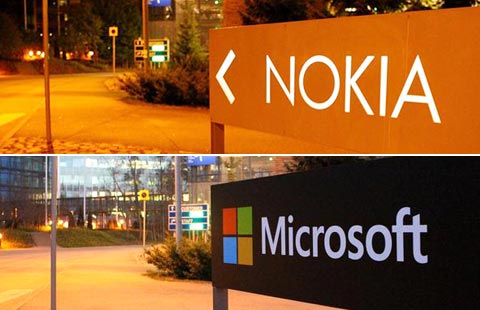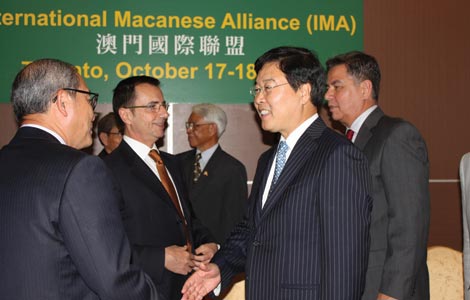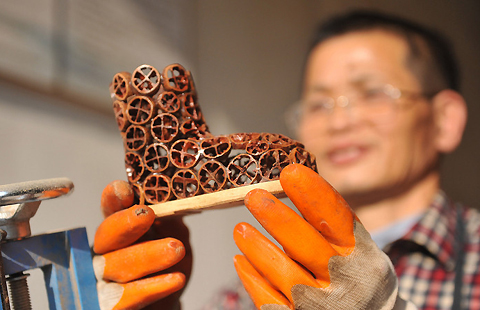China's manufacturing expands in October
Updated: 2014-10-24 07:31
By AMY HE in New York(China Daily USA)
|
||||||||
A preliminary reading of China's manufacturing sector showed increased activity in October, which analysts said can temporarily quell fears about China's slowing economy.
The Purchasing Managers Index rose to 50.4 this month — a three-month high — up from the 50.2 final reading for September, according to HSBC Holdings PLC. A PMI above 50 shows expansion; below 50 shows contraction. HSBC released the preliminary monthly gauge on Chinese manufacturing activity for October on Thursday, prior to a final reading that will be given on Nov 3.
``The PMI data is a positive sign that the slowdown in GDP growth could be stabilizing. If GDP growth were to pick up slightly or even remain stable in the fourth quarter, people will likely be less worried about a hard landing in the short term," said Ryan Rutkowski, China research analyst at the Washington-based Peterson Institute for International Economics.
Qu Hongbin, chief economist at HSBC, said in a statement that while manufacturing likely stabilized in October, the economy continues to ``show signs of insufficient effective demand. This warrants further policy easing and we expect more easing measures on both the monetary as well as fiscal fronts in the months ahead."
Qu said that domestic and external demand "showed some signs of slowing", even though both indices showed expansion. Employment and inventor indices improved as well, he said. HSBC said that Chinese manufacturing output expanded at its slowest rate in five months, decreasing to 50.7 in October from the 51.3 reading in September.
Though the October PMI reading showed expansion, Patrick Chovanec, managing director of Silvercrest Asset Management Group and former business professor at Tsinghua University, cautioned that a temporary expansion doesn't paint a full picture of China's economy.
"People are looking for too quick and easy a rebound, as if the challenges facing China's economy were somehow temporary or superficial. They are not," he told China Daily.
HSBC's preliminary PMI reading come two days after new Chinese government data showed that gross domestic product decreased to 7.3 percent in the third quarter, the slowest in five years.
"The slowdown in China's economy is driven by a structural rebalancing away from one kind of growth, hopefully towards another. Resilient exports — if that is what's happening — can help soften this transition, but won't alter it," said Chovanec.
"For China's economy to get back on a healthy track, it needs to flush out overcapacity and overinvestment in a wide swath of industries. And for that to happen, growth — at least in the short-term — must slow much more than it has," he added.
Chinese premier Li Keqiang said on Tuesday ahead of the APEC Finance Ministers' Meeting in Beijing that the economy's growth has been operating within "a reasonable range" in the first three quarters of the year, and that there is evidence of "positive and profound changes" in the economy.
Dan Rosen, co-founder of research firm Rhodium Group, told China Daily that China has transitioned out of an era where "all that mattered for China was the headline GDP target" and has instead focused on "dealing with the fundamentals of growth in a different way."
amyhe@chinadailyusa.com
Most Viewed
Editor's Picks

|

|

|

|

|

|
Today's Top News
Occupy Central not democracy: former Malaysian PM
Arrest of HK protesters sought
New York doctor tests positive for Ebola
Virgin America expands link with China Airlines
Alibaba's Ma heads for Hollywood in search of content
8 popular icons on traditional Chinese architecture
The Forbidden City relives in Vancouver Art Gallery
Twitter, Facebook eye 'strong connections'
US Weekly

|

|















